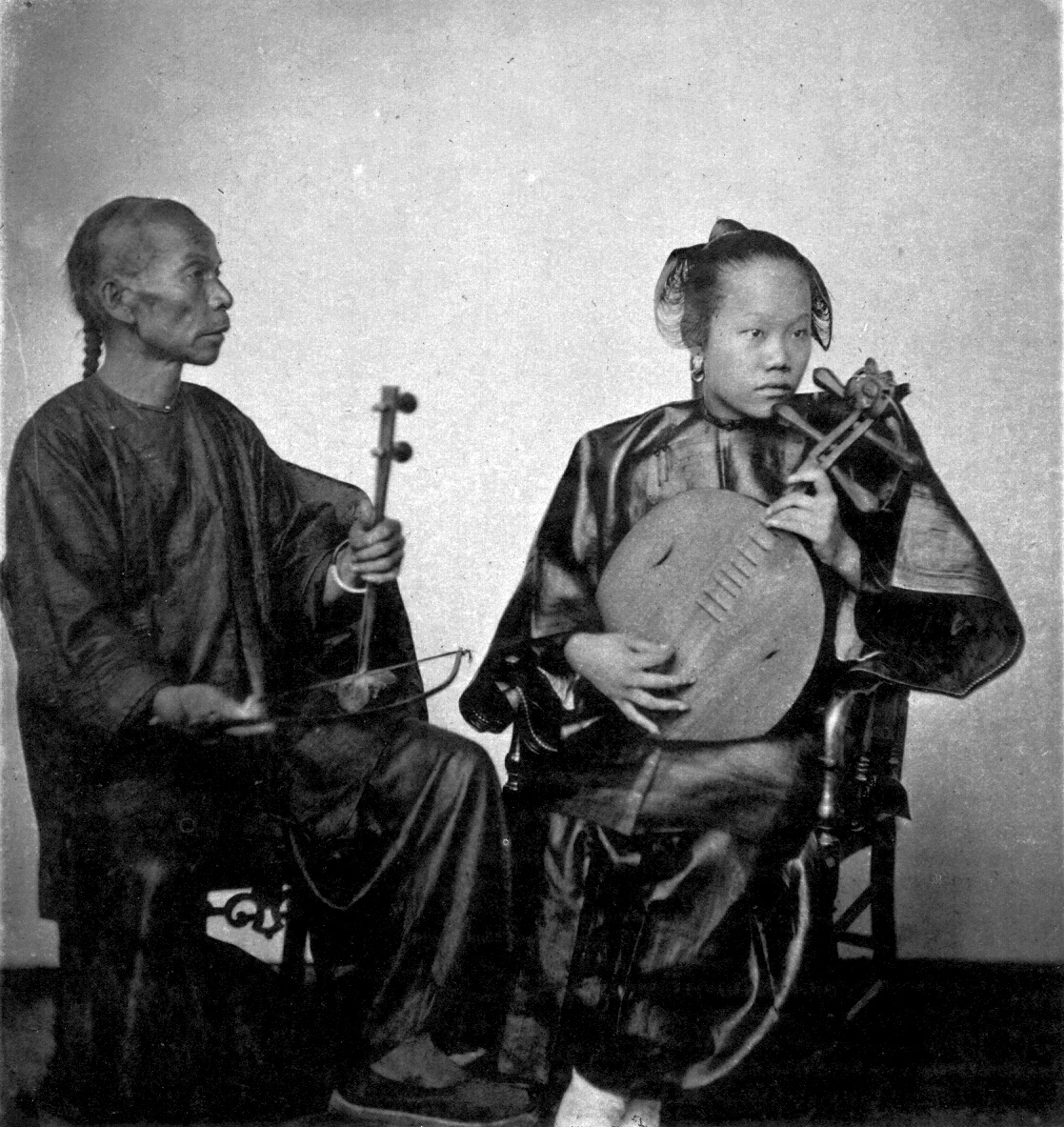|
Yueqin
The ''yueqin'' (; ja, 月琴, Gekkin; ko, 월금/月琴, Wolgeum; vi, Nguyệt cầm), also called a moon lute or moon guitar, is a traditional Chinese string instrument. It is a lute with a round, hollow soundboard, a short fretted neck, and usually four strings. It is an important instrument in the Peking opera orchestra, often taking the role of main melodic instrument in lieu of the bowed string section. The instrument was invented in China in the 3rd to 5th centuries AD, during the Jin dynasty. The ruan, another Chinese instrument, is the ancestor of the yueqin. The name ''yueqin'' once applied to all instruments with a moon-shaped soundboard, including the ruan; however, "yueqin" now applies to a separate category from the ruan family. Etymology The word ''yueqin'' is made of two characters, ''yuè'' (月 "moon") and ''qín'' (琴 "stringed instrument, zither"). Its name in Korean (''wolgeum'') Japanese (''gekkin'') mean the same thing, and are Sinoxenic words, me ... [...More Info...] [...Related Items...] OR: [Wikipedia] [Google] [Baidu] |
Ruan (instrument)
The ''ruan'' () is a traditional Chinese plucked string instrument. It is a lute with a fretted neck, a circular body, and four strings. Its four strings were formerly made of silk but since the 20th century they have been made of steel (flatwound for the lower strings). The modern ''ruan'' has 24 frets with 12 semitones on each string, which has greatly expanded its range from a previous 13 frets. The frets are commonly made of ivory or in recent times of metal mounted on wood. The metal frets produce a brighter tone as compared to the ivory frets. It is sometimes called ''ruanqin'', particularly in Taiwan. Sizes The ruan comes in a family of five sizes: *soprano: ''gaoyinruan'' (高音阮, lit. "high pitched ''ruan''"; tuning: G3-D4-G4-D5) *alto: ''xiaoruan'' (小阮, lit. "small ''ruan''"; tuning: D3-A3-D4-A4) *tenor: ''zhongruan'' (中阮, lit. "medium ''ruan''"; tuning: G2-D3-G3-D4) * bass: ''daruan'' (大阮, lit. "large ''ruan''"; tuning: D2-A2-D3-A3) * contrabass: ' ... [...More Info...] [...Related Items...] OR: [Wikipedia] [Google] [Baidu] |
Liuqin
The ''liuqin'' (Chinese: , pinyin: ) is a three, four or five -stringed Chinese mandolin with a pear-shaped body. The range of its voice is much higher than the ''pipa'', and it has its own special place in Chinese music, whether in orchestral music or in solo pieces. This has been the result of a modernization in its usage in recent years, leading to a gradual elevation in status of the ''liuqin'' from an accompaniment instrument in folk Chinese opera, to an instrument well-appreciated for its unique tonal and acoustic qualities. The position of the instrument is lower than the pipa, being held diagonally like the Chinese ruan and yueqin. Like the ruan and unlike the pipa its strings are elevated by a bridge and the soundboard has two prominent soundholes. Finally, the instrument is played with a pick with similar technique to both ruan and yueqin, whereas the pipa is played with the fingers. Therefore, the liuqin is most commonly played and doubled by those with ruan ... [...More Info...] [...Related Items...] OR: [Wikipedia] [Google] [Baidu] |
Music Of China
Music of China refers to the music of the Chinese people, which may be the music of the Han Chinese in the course of Chinese history as well as ethnic minorities in today's China. It also includes music produced by people of Chinese origin in some territories outside mainland China using traditional Chinese instruments or in the Chinese language. It includes forms from the traditional and modern, Western inspired, commercial popular music, folk, art, and classical forms, and innovative combinations of them. Documents and archaeological artifacts from early Chinese civilization show a well-developed musical culture as early as the Zhou dynasty (1122 BC – 256 BC) that set the tone for the continual development of Chinese musicology in following dynasties. These developed into a wide variety of forms through succeeding dynasties, producing the heritage that is part of the Chinese cultural landscape today. Traditional forms continued to evolve in the modern times, and over the cour ... [...More Info...] [...Related Items...] OR: [Wikipedia] [Google] [Baidu] |
Chinese Orchestra
The term Chinese orchestra is most commonly used to refer to the modern Chinese orchestra that is found in China and various overseas Chinese communities. This modern Chinese orchestra first developed out of Jiangnan sizhu ensemble in the 1920s into a form that is based on the structure and principles of a Western symphony orchestra but using Chinese instruments. The orchestra is divided into four sections – wind, plucked strings, bow strings, and percussion, and usually performs modernized traditional music called ''guoyue''. The orchestra may be referred to as ''Minzu Yuetuan'' () or ''Minyuetuan'' () in mainland China, ''Chung Ngok Tuen'' () in Hong Kong, ''Huayuetuan'' () in Southeast Asia, or ''Guoyuetuan'' () in Taiwan, all meaning Chinese orchestra. The term modern Chinese orchestra is sometimes used to distinguish the current form from ancient Chinese orchestras that existed since the Shang dynasty and was used in royal courts and later during Confucian ceremonies. Anc ... [...More Info...] [...Related Items...] OR: [Wikipedia] [Google] [Baidu] |




